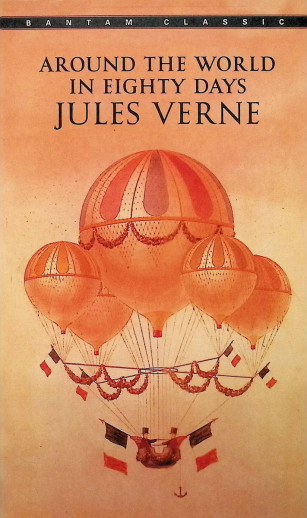We use cookies to make your experience better. To comply with the new e-Privacy directive, we need to ask for your consent to set the cookies. Learn more.
Around the World in Eighty Days by Jules Verne | Bantam Classic
SKU
000186
ISBN
9780553213560
Grade 5-AD
These icons are designed to help you quickly understand and learn important information about our products.
Teaching Method
Traditional
Teacher-centered curriculum commonly used in classrooms that may include a text, teacher manual, tests, etc.
Charlotte Mason
A methodology based on the work of a 19th century educator who maintained that children learn best from literature (Living Books), not textbooks.
Classical
A methodology based on the Latin Trivium (three stages of learning), including the grammar stage (memorization and facts), logic stage (critical thinking), and rhetoric stage (developing/defending ideas).
Unit Study
A thematic or topical approach centered around one topic that integrates multiple subject areas.
Montessori (Discovery)
A methodology based on the work of a 20th century educator that emphasizes student and sensory-driven discovery learning and real-life applications.
Other
Other methodologies
Religious Content
Secular
Contains content contrary to common Christian beliefs (i.e. evolution).
Neutral
Avoids religious or theoretical topics or presents multiple viewpoints without preference.
Christian/Religious
Faith-based or including instructional religious content.
Learning Modality
Auditory
Learns through listening, talking out loud or reading out loud.
Visual
Learns through seeing, prefers written instructions and visual materials.
Kinesthetic/Tactile (Hands-On)
Learns through moving, doing and touching.
Multi-Sensory
Curriculum that employ a variety of activities/components.
Presentation
Sequential
Curriculum progresses through well-defined learning objectives. Emphasizes mastery before moving to the next topic.
Spiral
Topics and concepts are repeated from level to level, adding more depth at each pass and connecting with review.
Conceptual/Topical
Focus is on the “why,” often with a unifying concept as well as specific skills; coverage may be broader.
Teacher Involvement
Low Teacher Involvement
Student-led materials; parent acts as a facilitator.
Medium Teacher Involvement
A mix of teacher-led time and independent student work.
High Teacher Involvement
Teacher-led lessons; may utilize discussions, hands-on activities and working together.
Additional Materials Required
No other materials needed
Everything you need is included.
Other Materials Required
There are additional required resources that are a separate purchase.
Other Materials Optional
There are additional resources mentioned or recommended but are not absolutely necessary.
Consumable
Consumable
Designed to be written in; not reusable.
Non-Consumable
Not designed to be written in; reusable.
Our Price
$5.95 $5.95 $4.75
Rainbow Savings: $1.20
Description
Publisher's Description of Around the World in Eighty Days by Jules Verne | Bantam Classic
Jules Verne Great excitement and awe greeted its publication in 1873, and today Around the World in Eighty Days remains Jules Verne’s most successful novel. A daring wager by the eccentric and mysterious Englishman Phileas Fogg that he can circle the globe in just eighty days initiates this marvelous travelogue and exciting suspense story. Together with his manservant, Passepartout, Fogg makes a breathless world tour, overcoming wild misadventures and finding time to rescue a beautiful Indian maharani from a burning funeral pyre—all the while restlessly pursued by a bumbling detective called Mr. Fix. Realistically utilizing nearly every means of transportation known in the 1870s, Around the World in Eighty Days generated enchantment with scientific progress—and its delightful mixture of fantasy, comedy, and dazzling suspense has kept it a perennially superb entertainment.
Category Description for Beautiful Feet Senior High Curriculum (9-12)
Using quality classical or award-winning literature, students learn history with a focus on gaining understanding, perspective, and critical thinking skills. Learning to analyze, think independently, choose and defend opinions with evidence, and empathy are the goals of this study.
Details
| Product Format: | Softcover Book |
|---|---|
| Grades: | 5-AD |
| Brand: | Bantam, Doubleday and Dell |
| Author: | Jules Verne |
| ISBN: | 9780553213560 |
| Length in Inches: | 6.75 |
| Width in Inches: | 4.25 |
| Height in Inches: | 0.25 |
| Weight in Pounds: | 0.2 |
| Edition: | Reissue |
| Pages: | 176 |
| Publication Date: | 12/5/2013 |
| Translated by: | George M Towle |
Videos
Reviews
No Ratings
Be the first to review this item
Have a question? Ask owners.
Start typing and see existing answers.
Why did you choose this?


A great book to add to our 7th and 8th grade library collection
Need a new copy after wearing out our old one.
Living Books Curriculum Grade 6
this is a great piece of literature! What other reason should I have?